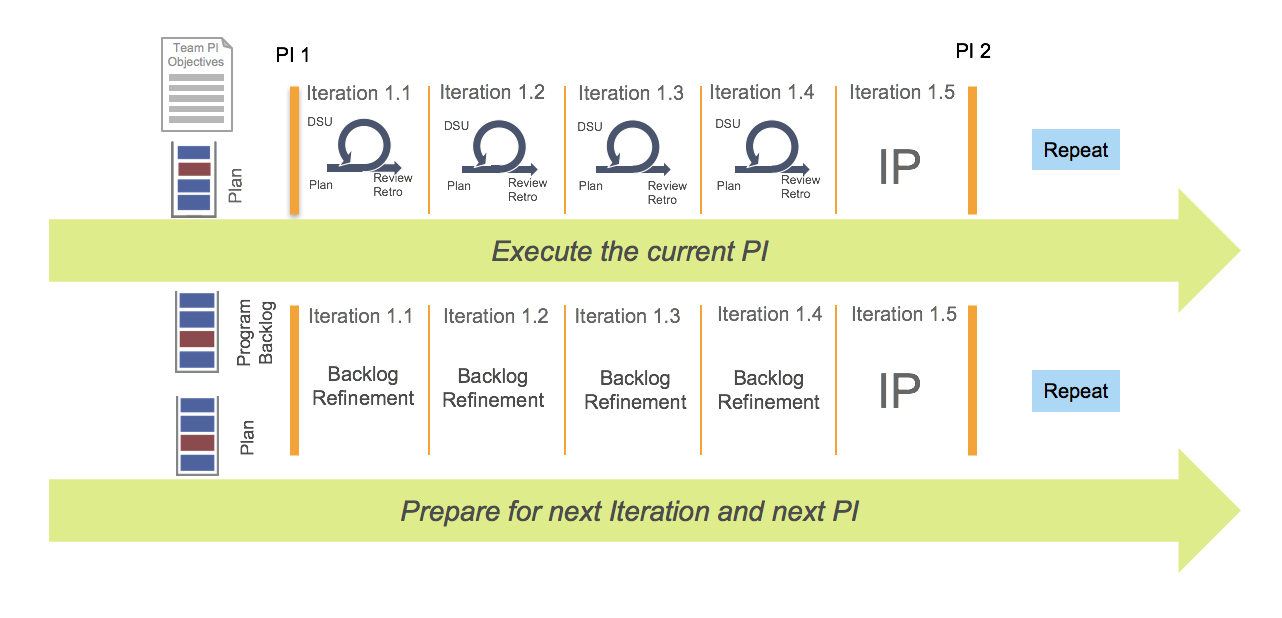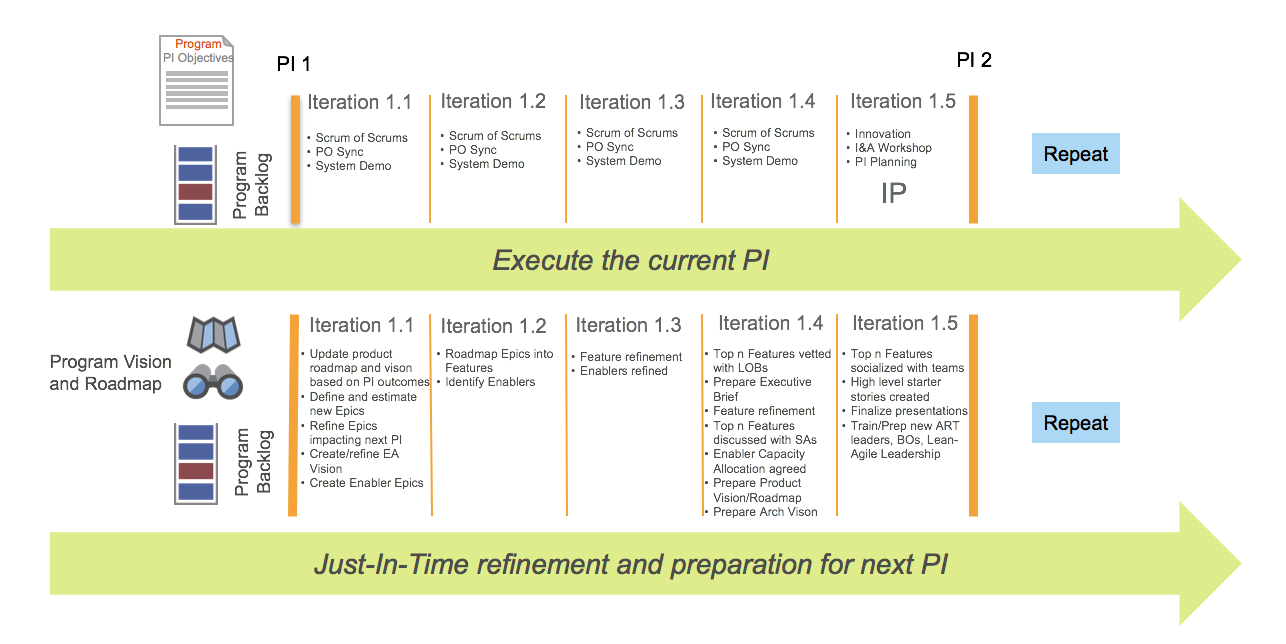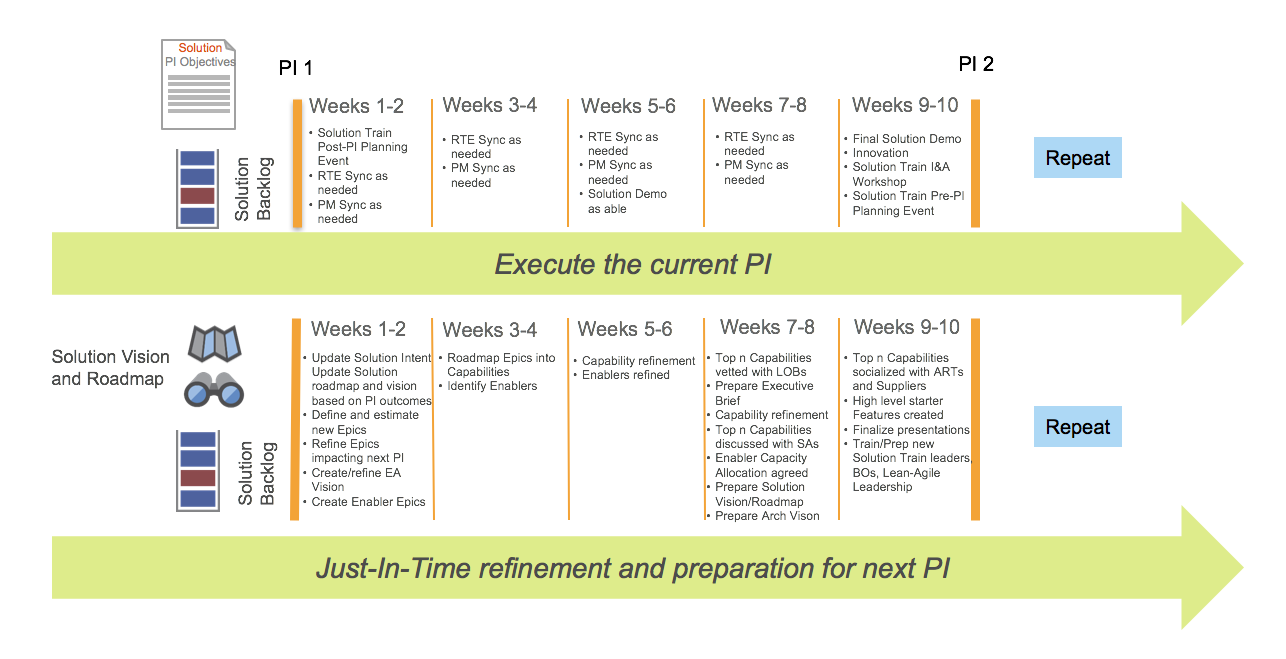 Enterprise Backlog Structure and Management
Enterprise Backlog Structure and Management
by Charlene M. Cuenca, SPCT, Icon Technology
Note: This article is part of the Community Contributions series, which provides additional points of view and guidance based on the experiences and opinions of the extended SAFe community of experts.
Program execution is one of the four SAFe Core Values. To achieve successful program execution, organizations need an efficient system that defines the backlogs of the value to be delivered, the roles that manage them, and the proper timelines for refinement at every level of SAFe. Understanding that we are already doing some form of preparedness today, with our own checklists and timelines being more ad hoc, this article illustrates how to connect the levels to enable ‘continuous Program Increment (PI) readiness.’ This requires contemplating these processes to provide an organized thread aligning them and the people using them to make them more cohesive. To pursue this, we adopt Principle #2, Apply Systems Thinking.
The Enterprise Backlog Structure
What differentiates Agile at scale is the use of a hierarchical backlog structure. This mechanism organizes the Enterprise around value delivery at all levels. Depending on the configuration selected, SAFe uses up to 4 backlogs (full SAFe configuration):
- Portfolio Epics are split into Capabilities
- Capabilities are split into Features
- Features split into Stories
Note, items may also arise locally and are not required to originate from a higher-level backlog. The items that flow through from the higher backlogs tend to be more long-term and strategic, but many of the items emerge locally and may or may not link to a higher level backlog item type. Figure 1 below summarizes the backlog structure, primary roles responsible, and duration and scope of various backlog items.

In SAFe, Epics can exist at the Portfolio, Large Solution, and Program levels, limited to the scope of that level.
Note: Tasks are optional in SAFe and they are not backlog items type per se, but many teams use them to identify the elements of work needed to accomplish a Story.
Keep in mind that working in the context of an enterprise backlog structure means that as we go lower in the hierarchy, we need to think of backlog items as smaller pieces of value delivery making up a larger increment. To help Agile Release Trains (ARTs) prepare for their next PI Planning, it’s essential to incorporate backlog refinement in our planning and execution cycles. We can do this by viewing the PI cycle as a timeline with parallel tracks: one for current PI execution; one for next PI preparation, as shown in Figure 2.
Team Level
At the Team Level, we want to continue to execute Plan-Do-Check-Adjust (PDCA) loops within our iterations, while also applying a regular cadence of backlog refinements to make sure stories are in a ready state for upcoming iterations. This requires allowing ample time to review upcoming features to determine what stories and enablers may be essential to accomplish them in the next PI. Although the Scrum Master remains the primary facilitator for events at this level, the onus is on the Product Owner (PO) to conduct the backlog refinement sessions with the team. The PO also participates in train-level feature refinement led by Product Management (PM). To enhance collective understanding and fine-tuning of the desired functionality, it’s also highly recommended that the program management trio—Release Train Engineer (RTE), PM, and System Architecture/Engineering (SA)—socialize features directly with the team for the upcoming PI.

Executing the current PI – Team
- Iteration Planning, DSUs, Iteration Demo, Iteration Retro
Preparing for the next PI – Team
- Participate in refinement sessions (Feature-Story, Story-Story)
- Repeat for each Iteration in the PI
Program Level
While executing the current PI at the program level, we also need to pay sufficient attention to PI planning. This ensures that all the preparation activities don’t occur in the hours just before the event. Instead, there needs to be ongoing coordination and refinement of artifacts that support the next PI Planning event. Although the RTE remains the key facilitator for events at the program level, Product Management has the primary responsibility to conduct the feature backlog refinement sessions with the Agile teams. Product and Solution Management also participates in Portfolio Epic and Capability refinement sessions led by the Epic Owner. Keep in mind that epics could exist at various levels (Portfolio, Large Solution, and Program).
Figure 3 depicts PI execution and the ongoing PI preparation activities based on these parallel-track iterations. Also included below is a checklist format is a typical PI Planning preparation timeline. This offers checkpoints for RTEs, SMs/PMs, and others as they work with their Solution Trains/ARTs to prepare for the next PI. These guideposts prevent ART leaders from falling too far behind. Effective readiness requires coordination with others to ensure alignment and “no surprises” at the PI event.

Executing the current PI – Program
- Scrum of Scrums, PO Sync, System Demos, Innovation, I&A Workshop, Plan PI
Preparing for the next PI – Program
Iteration 1
- Update product roadmap and vision based on PI outcomes
- Define and estimate new epics
- Refine epics impacting next PI
- Create and refine Enterprise Architecture Vision
- Create enabler epics
Iteration 2
- Roadmap epics into features (Enterprise Architects/System Architects)
- Identify enablers
Iteration 3
- Feature refinement
- Enablers refined
Iteration 4
- Top X features vetted with Business Owners
- Prepare Executive Briefing for PI Planning
- Feature refinement
- Top X features discussed with System Architects
- Enabler vs. feature capacity allocation agreed
- Prepare product vision and roadmap
- Prepare architecture vision
IP Iteration 5
- Top X features socialized with teams
- High-level starter stories created
- Finalize presentations
- Train and prep new ART members, Business Owners, and other Lean-Agile Leaders
Large Solution Level
As with the Program Level, we need to ensure that all Large Solution-Level PI preparation activities also don’t occur at the eleventh hour. Here, too, we must coordinate and refine the artifacts that support the next PI Planning event. Although the Solution Train Engineer (STE) remains the key facilitator for SAFe events at the Large Solution level, the primary responsibility falls to Solution Management to conduct the Capability backlog refinement sessions with the affected ARTs and Suppliers. Solution Management also participates in Epic refinement, which is conducted by the Epic Owner. (Keep in mind that epics can exist at the Portfolio, Large Solution, and Program levels).
Figure 4 depicts a parallel, Large Solution-level track of PI execution and preparation activities based on weeks within the PI. Also included below is a typical PI Planning preparation timeline in a checklist format that serves as checkpoints for STEs, RTEs, Scrum Master, Product Managers, and others as they work with their Solution Trains/ARTs to prepare for the next PI. These serve as guideposts for Solution Train leaders so that they do not fall too far behind. Effective readiness requires coordination with others to ensure alignment and “no surprises” at the Pre-PI and Post-PI events of the Solution Train.

Executing the current PI – Large Solution
- Post PI-Planning event, ‘RTE Sync’ as needed, ‘PM Sync’ as needed, Solution Demos, Innovation, I&A workshop, Pre-PI Planning event
Preparing for the next PI – Large Solution
Iteration 1
- Update Solution Intent
- Update Solution roadmap and vision based on PI outcomes
- Define and estimate new Epics
- Refine Epics impacting next PI
- Create and refine the Enterprise Architecture vision
- Create enabler epics
Iteration 2
- Roadmap epics into capabilities
- Identify enablers
Iteration 3
- Capability refinement
- Enablers refined
Iteration 4
- Top X Capabilities vetted with Business Owners
- Prepare Executive Brief
- Capability refinement
- Top X Capabilities discussed with SAs
- Enabler Capacity Allocation agreed
- Prepare Solution Vision/Roadmap
- Prepare Architecture Vision
IP Iteration 5
- Top X capabilities socialized with ARTs and Suppliers
- High-level starter features created
- Finalize presentations
- Train and prep new Solution Train roles, Business Owners, Lean-Agile Leadership
Portfolio Level
To enable the flow of strategic initiatives at the Portfolio Level, Lean Portfolio Management (LPM), Epic Owners, and Enterprise Architects need to keep the vision and roadmap current, refining associated Epics so that they’re ready for the trains. This includes Business Epics and Enabler Epics. Also, the Epics need to align with Strategic Themes from the Enterprise, and the strategic vision needs to be kept up to date. This provides executives with access to information that informs the Solution Trains/ARTs on key strategic initiatives that affect them as they proceed through Pre-PI, PI Planning, and the Post-PI Planning Events.
Summary
“It does not happen all at once. There is no instant pudding.”
– Deming
SAFe provides a framework that helps enterprises deliver value in manageable chunks using a flow-based, systematic approach. To enable consistent flow at various levels, the enterprise backlog structure needs to be understood. Even in the face of changing strategic priorities, the responsible roles need to drive their backlogs continuously to keep them in a ready state. Staying ahead of PI preparation will enable a consistent flow, with the PI timebox as the heartbeat of program execution. Using a Just-In-Time (JIT) approach, parallel execution and PI preparation activities at the Portfolio, Large Solution, Program, and Team levels allow sufficient lead time for ART leaders and the rest of the enterprise to prepare. Attention needs to be paid to ensure we truly enable JIT decomposition as close as possible to deliver, without doing too much decomposition early in the PI (a big form of waste). This will facilitate the collaborative discovery, discussions, and alignment that PI Planning fosters.
Last updated: 30 October 2017





